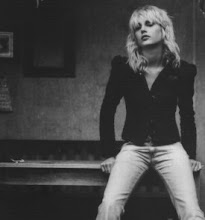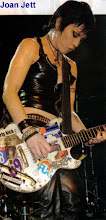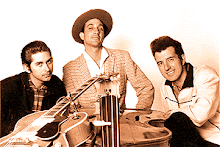The
making of a singer
by Renee Fleming
Penguin Books ISBN 01430
3594 0 paperback
a book review
I have read many books on music and
singing in particular through the years and I’d have to say that this is the
first time I have found such a book to be entertaining and informative. Written
by the U.S.’
own international lyric soprano, The Inner Voice was published in 2004 without
a lot of fanfare and a minimum of publicity. It has taken me quite awhile to
sit down with this book which has been tempting me all these years and now I
certainly wish that I’d have read it when it first came out. It would certainly
have made quite a difference to my approach when I and forty other colleagues baptized
Denver’s Ellie
Caulkins Opera House back in 2005, shortly after my birthday, with a song
extravaganza. Perhaps not the height of my career, necessarily but I found out
that the years had left me with my voice better than ever. They say age is just
a thing that is mind over matter. Well, I’ve discovered that if you don’t mind,
then it doesn’t matter! (Little joke there!)
Even Renee expounded on a phenomenon that
I have known about since I was thirteen years of age and had taken on lessons
from Denver’s
best vocal coach, Sylvia Bagley. She never changed her approach to building my
voice. She was the first to discover that I had a two-octave range already but
I needed to build the top register’s muscles and she was the person to get it
done. Toward the end of her book Renee speaks of this when she said, “muscle
memory is a key aspect of singing.” My first concert at fifteen blew everyone
in attendance out of the water. I don’t know how many times I heard, “I had no
idea she had a voice like that! She belongs in concert halls and the Opera!”
The power of my voice in the higher register didn’t happen overnight, mind you!
Only now am I hearing the kind of ausstrahlung
and still clear and bell-like tones which
we spent so many years perfecting. In Renee’s words on page 41 it came out in
one sentence.
“I’ve
finally accepted the fact that singing takes ten minutes to explain and ten
years to accomplish.”
The book’s title is summed up shortly
thereafter when she wrote, “I always know to listen to my inner voice where my
career is concerned. This intuition along with resilience has been a
fundamental anchor of my professional life.”
Expounding further on page 55 she says, “In the end, singing isn’t a
science but a highly cultivated, almost perverse use of our natural voices and
it requires persistence.” With Sylvia it was simply, “If it hurts, stop it! Try
again tomorrow after you have done your exercises.” I don’t remember pain but I
became acutely aware of my voice as a part of my physicality and eventually
learned to make sure I never injured myself or my voice. It’s possible, I have
found, to destroy a voice through abuse and not to know for certain until you
simply cannot sing. The vocal chords are the most delicate part of our anatomy
and must be treated as such. When someone tells you they are not in good voice-
take them at their word.
In this book, which I will again remind
you was published in 2004, Ms. Fleming recounted how during her research she
uncovered a study with a major observation that the academies and universities
were turning out well-trained performers but were ignoring the fact that there
were few places for them to perform. I’m sure this was made according to the
comparison of the myriad of venues which are more likely to use performers with
lots of onstage experience but lack formal training for their genres. Many
don’t require it, in all honesty. I believe this is changing because the music
world is beginning to find worth in the classical formal training no matter the
genre.
A good portion of this book is Ms. Fleming’s
account of the progress of her training, her teachers and coaches and her
struggle with obstacles to achieving a better voice. Much of it is surprising
and enlightening for anyone who might be considering following in her
footsteps. This is one of the reasons that I thought about how this book
would’ve served me well many years ago as I struggled with professional
identities. I’ve never denied my talents but I have to admit that as you
advance in life you start to acclimate and prioritize according to your most
desired activities.
Her personal story is inspiring as well.
None of her formidable ambitions stopped her from living a full and normal
life. She married quite young and had two daughters during the most crucial
portions of her gaining acceptance and professional reputation in the U.S. and
international stages. She literally traveled the world very pregnant and went
about her professional singing career with integrity and persistence. Divorce
did not stop her. Anyone as dedicated, as she became, can take these problems
in stride. At the beginning of 2001 she recounts the loss of her greatest
professional mentor, Beverley Johnson to disease and the poignant interludes
are heart-wrenching and yet still inspirational. This did not surprise me,
personally, because I have found that music itself is a kind of balm to life
and death which is indomitable.
Many of her pointers for aspiring singers
are priceless:
On page 138 she expounds on the mechanics
of sustaining a long tone or note with: As soon as any sort of holding occurs
as the result of muscular tension, it reveals itself as a glitch in the
sound. If I have to hold a note for a
very long time, I imagine it as moving and spinning, for the note has to have
life. In a way, a singer actually refreshes a note with every beat that it’s
held. Once the hammer hits the string in a piano, there no way to retrieve the
tone. There is absolutely nothing the greatest pianist in the world can do to
keep that sound from dying away. That’s the nature of the instrument. Like any
wind instrument, however, the voice can sustain a tone as long as the breath
stays actively engaged.
(I have proven the verity of that last
sentence not just from singing but also with my flute playing which has the
added advantage of harmonics which are much higher tones, many of which are
higher than any human can sing. I laugh when writers compare the flute to a
human voice because there is no way we can imitate those dynamics without a
choir of perhaps a hundred singers or more!)
On page 143 she gives practical advice
such as this:
“I avoid excessive air-conditioning and
cold drafts on my head and ears, refrain from unnecessary speaking on
performance days and drink little or no alcohol, which dehydrates, the night
before a performance…one concession I do make is in taking care with how I use
my voice, whether speaking or singing.”
“Vocal muscles have to be trained
consistently for strength, flexibility and stamina, just as an athlete’s would.
Alfred Kraus said that one should be able to sing easily for six hours a day,
although for me, two or three hours is usually the limit.”
One strange bit I discovered on page 145
states that “The danger with sopranos- in fact, mostly American sopranos- is
that they tend to sing too thickly in the upper middle [the notes at and around
the top line of the staff] , and before you know it, the voice has aged, the
top is gone, and a wobble is born.. The weight is too much and the voice can’t
bloom in the top. It’s a stone column and not the sapling it should be.” (This
is a very complicated way of saying that what you most dislike about listening
to opera singing is this very phenomenon.) She added that one “Dr. Slavit said
the natural aging of the voice is caused by the membranous tissue of the vocal
cords changing and becoming less flexible. However, the same treatments that
can rejuvenate the skin of our faces can potentially regenerate and nourish the
lining tissue on the cords.” Apparently, these women just need some kind of
youth serum injection to stop the inevitable. Hmm.
However, the truth is that I’ve heard Miss
America
pageant contestants with the same problem. Nothing is odder than hearing this
strange throaty sound coming from a young woman. It is an unacceptable sound
and yet it is taught and encouraged by vocal teachers and coaches who have no
ethics. My personal feeling about this is that these are false voices and
eventually using these irritating techniques will ruin what ever voice is
actual and true.
On the next page (146) Renee’s advice in
one sentence really states all that needs to be said. Many people try to sing
out of their vocal range which is a recipe for disaster. “Never sing on your
principal: Never sing to the extreme and be careful about singing to the outer
dynamic reaches of your voice.” I couldn’t agree more with that except to add
that without a great vocal teacher or coach it isn’t difficult to strain and
permanently damage your voice because you forced it to reach where it cannot
possibly go.
Renee writes about dynamics at length in
the previous two pages:
“…singers naturally have to be
louder just to be heard. One of the most difficult elements of all is the
raising of the basic tuning of the orchestra from the baroque 430 to 435 in the
mid-19th century and then to 440 early in the 20th and
now to 444 in Vienna.
This calibration had differed as much a tone and half over time, which
challenges singers enormously if a piece is already high, a fact I didn’t fully
understand until I sang Mozart and Handel with period instruments.”
“Another factor working against opera
singers is that, over the years, taste in recordings has moved toward warmer,
thicker tones for the voice in every repertoire and that type of sound doesn’t
cut through orchestral textures as well as a brighter tone. It takes more
volume and therefore more breath pressure, to be heard when using a darker
sound. The benefit of brightness in the voice is that it’s the center, core or squillo edge in a voice that enables it
to project in a large hall over an orchestra. Unless the conductor and the
orchestra have disciplined sense of dynamics when accompanying singers, we wind
up with the inner ear problem again, believing we’re not meeting expectations…Singers
who succumb to this temptation soon lose their vocal sheen and beauty and burn
out much more quickly….so that the human voice isn’t expected to vault over
this suddenly enormous hurdle.”
Her personal advice was her own experience
but one I feel is extremely important. She said, “The only thing I expect to
feel at the end of a long performance is physically tired, but ideally never
vocally tired.” Opera singers traditionally don’t use amplification and ideally
we never should. Singers who use this crutch for other genres are dooming
themselves for its use and will ultimately lose all dynamic power of their
natural voice in the end. We don’t try to sing over amplified guitars,
percussion and other types of overly loud music. Just this year I heard Diana
Ross sing on television and I could barely hear her- that is from an overuse of
microphones.
By page 160 she gets into areas that are a
little more subjective but definitely with information that a good part of the
listening public is unaware of or simply ignorant. She wrote, “We’re the
weightlifters of the vocal arts..” and essentially she’s right. If you listen
to opera from any kind of recording you’ll never realize that we can fill a
venue or concert hall without amplification except what’s naturally present
unless you actually attend a concert. This is what being a diva actually means.
Renee keeps most of the book very personal
to her experience in overcoming obstacles. Even from the beginning she
struggled over high notes and for anyone singing classical and opera music but
especially a soprano, it would be considered an insurmountable obstacle for a
career in this genre. She wrote: Since high notes have always been a bit unsure
for me, I have to be extremely vigilant to keep the fear factor from creeping
into my singing, even now. Once I become overly aware of a note
and the ways in which it might fail me, chances are it will fail. She wrote
about using pure head voice which I never use except when I purposely need to
sing exceptionally softly. There is no other use for that and I would stress
that to all singers no matter the genre. Curiously, she mentions that
“sometimes the acoustic is too live, which can cause me to sing in a strangely
high resonance position and that’s even worse than an acoustic that’s too
dead.”
The most enjoyable part of her book was
reading about how she engages herself to the audience and how it supports her.
I do believe that this is more important than any other advice you can give to
a novice. Many talented and successful singers need to be reminded of these
aspects of performance. She mentions this quite well on page 178 and I was left
ruminating some of my own experiences in performing from as far back as the
beginning. I would only add that audiences can be stingy or generous with their
attention and you must learn to cope with both. Some acting talent helps this
tremendously. I only know that I could sing to a cricket if I have to with no
change in my performance. Only a few pages later she got into an area which I
disagreed with entirely. Her sentence on page 181 states: “The reason that some
singers go on to become great artists has very little to do with their voices
but rather with the fact that they have used their instruments as tools for
detailed communication.” I believe that singers are artists within their own
right. If you listen to five different singers on the same song you will get a
sense that vocal artistry is the most engaging form of music there is or ever
can be. Each performance will have its own uniqueness and further it is almost
like fingerprints in identifying such singers on sound alone.
Roles and Backstage, the two remaining
chapters of the book, really brought everything about opera to life in a way I
never really have thought about but often have mused. How does one keep a
character portrayed time and again, fresh and alive? It is fascinating how she
has taken these stories to heart and not only made them her own but also given
them more depth or different personalities. It is apparent that she loves her
genre and more importantly, she lives
her genre. As a result, her performances have captivated audiences in opera
houses and recital halls all over the world.
I would recommend this book for the novice
or student of opera or singing to get an insight into artistic development-
keeping in mind that it will differ with each person, of course. There is much
content in the book that a person can take as gospel truth while other parts
are merely for insight. Renee did a wonderful job of exemplifying the world of
opera as a way of life not only for its luminaries and human constituents but
for those who sit in the audience and drink in its richness and musicality.
The most piquant advice in the book was
administered to Renee by an early vocal teacher Jan DeGaitani who told her,
“Having perfection as your goal will only set you up for failure.”
Excellently,
The Castle Lady











































No comments:
Post a Comment